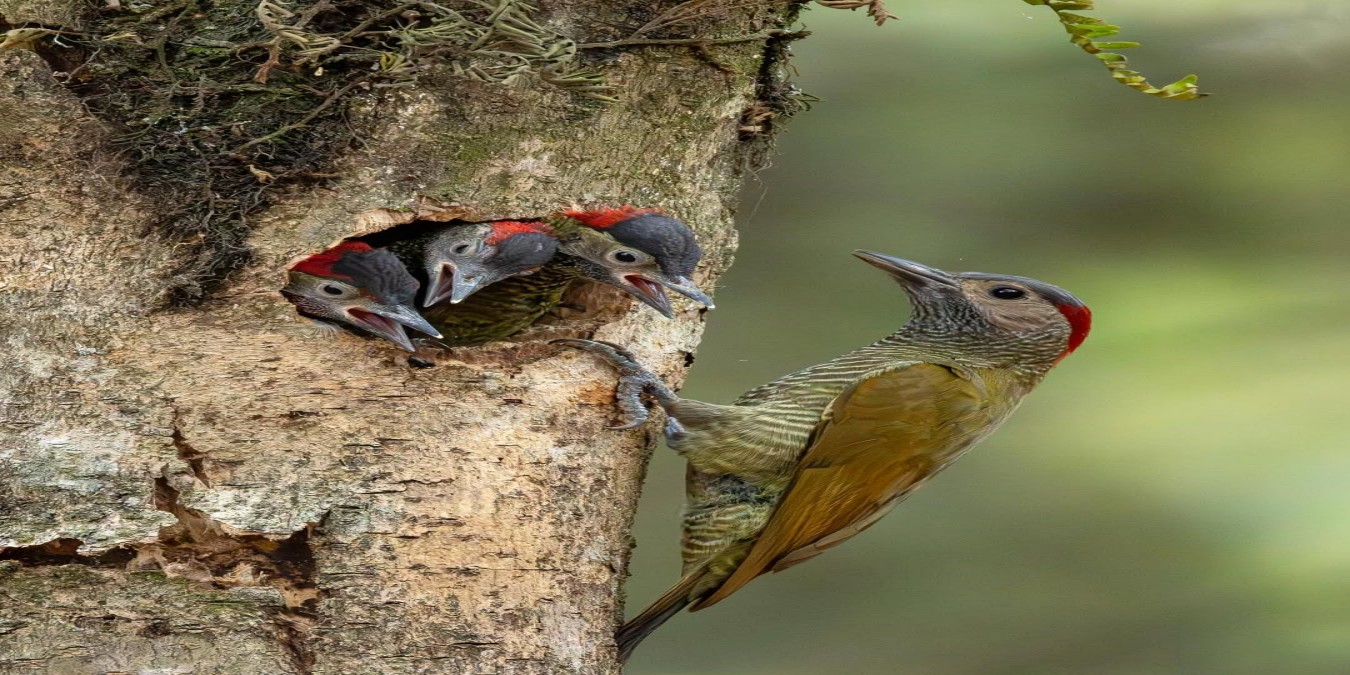Small but resolute, the Golden-olive Woodpecker moves through Tobago’s forests like a flicker of sunlight brought to life. Its plumage is an intricate weave of mossy olive, warm bronze, and quiet gold that seems borrowed from the island’s own palette, as if the bird were shaped by the very trees it clings to.
In the shadowed woods of Mason Hall, along the ridges above Roxborough, and in the tall fruit trees that tower over old village yards, this woodpecker has held its place for generations. It is not loud in colour, but it is loud in presence. Long before you ever see it, the forest gives it away: a sharp, metallic peek cutting through the leaves, or a rattling trill rising like a tiny drumroll beneath the canopy. These sounds are its signature part, territory, heartbeat of the woodland itself.
With stiff tail feathers braced against bark, the Golden-olive works methodically, tapping and probing with a precision born of ancient instinct. Each strike is deliberate. Each pause is calculated. It is a creature that knows the language of wood, the hollow spaces that hide beetle larvae, the dry stems that cradle termites, the secret corridors beneath the bark where insects pulse like the forest’s hidden engines.
On Tobago, it lives quietly but confidently among the island’s tangled green. Watch closely, and you may see the flash of its red crown, subtle in females, brighter in males, catching the light as it climbs. Sometimes it moves alone, focused and self-contained; other times it joins mixed feeding flocks, slipping between tanagers and honeycreepers like a scholar among dancers.
Unlike the seabirds that rule Tobago’s coasts, this woodpecker is a keeper of inland stories. Its history is written in the trunks of immortelle, cedar, and towering poui, in the soft chips that fall beneath a tree it has chosen, in the nest cavities it carves with patient devotion. For decades, naturalists have recognized Tobago’s birds by their subtle variations, and the Golden-olive Woodpecker is no exception, its island lineage shaped quietly by the divide of sea and time.
And yet, despite its small stature, it stands as a symbol of resilience. As forests shift and habitats shrink, the Golden-olive adapts, holding to the wooded edges, the village groves, the patches of green that still stitch Tobago together. It is a reminder of how much life thrives in the spaces we pass without noticing.


Comments